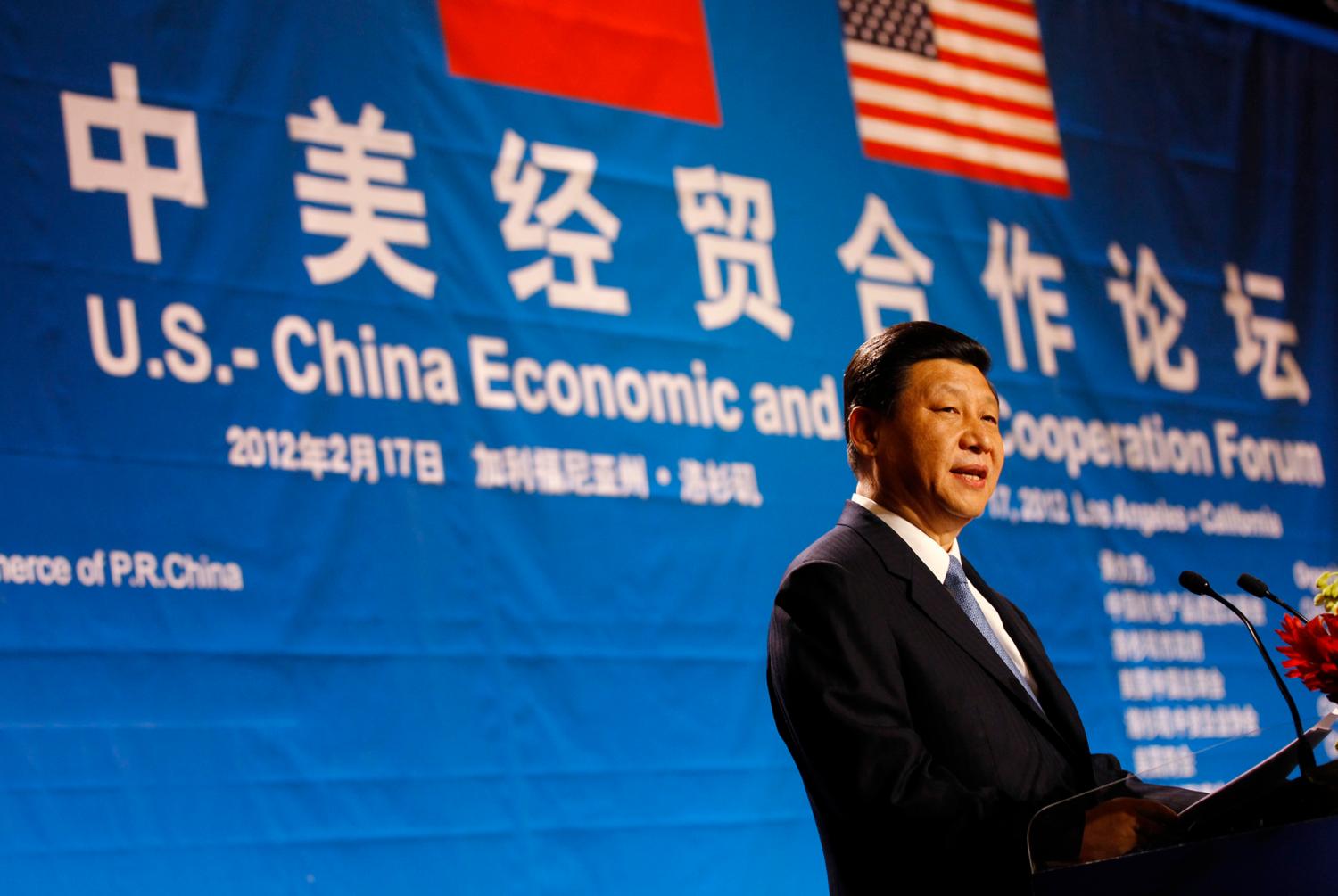Editor’s Note: For Campaign 2012, Kenneth Lieberthal and Jonathan Pollack wrote a policy brief proposing ideas for the next president on America’s relationship with China. The following paper is a response to Lieberthal and Pollack’s piece by Joshua Meltzer. Richard Bush also prepared a response arguing that the U.S. and China must reduce their mutual mistrust in order to cooperate on global challenges.
The size and strength of the American economy has underpinned U.S. leadership in the world, and the long-term prospects for U.S. economic growth are essential for maintaining this role. The strength of the American economy also matters for U.S.-China economic relations. As Kenneth Lieberthal and Jonathan Pollack conclude, the “single biggest factor determining the shape of the U.S.-China relationship over the coming four years will be the extent of America’s success in getting its domestic house in order.” While many of the challenges to the American economy are domestic in nature, international trade and investment matter. In 2008 more than 15 percent of U.S. gross domestic product came from international trade. In addition, in 2011 the United States earned more than $450 billion in income from a stock of over $4 trillion in direct overseas investment.
Also in 2011, total U.S.-China trade was $500 billion, and the U.S. trade deficit with China was $295 billion, making it the largest bilateral trade deficit the United States has ever had. How it manages its economic relationship with China will have important implications for the U.S. economy and job creation. Endeavors in this regard will also help ensure that China plays a leadership role in supporting the current global economic order.
One way President Barack Obama has sought to reduce barriers to U.S. trade and investment in China, such as weak protection of intellectual property and local technology procurement laws, has been through regular meetings of senior officials from both sides with the U.S.-China Strategic and Economic Dialogue (S&ED) and the U.S.-China Joint Committee on Commerce and Trade (JCCT). These meetings have provided opportunities to develop mutual trust, a critical ingredient for deepening and strengthening the bilateral relationship. As Lieberthal and Pollack observe, a deficit of trust regarding strategic, long-term intentions on both sides is at the heart of difficulties with the broader U.S.-China relationship. The next president should continue to invest time and energy in these meetings. Building trust between top U.S. and Chinese officials will be especially important in 2013 when a new Chinese leadership and potentially new American president take office. The next American president needs to be prepared to build stronger economic relations with China and in doing so deliver results for the U.S. economy.
The next American president must also place a premium on resolving trade issues with China at the World Trade Organization (WTO), where the United States has initiated a range of disputes against China’s trade practices. The WTO is another forum where regular interaction among officials helps develop greater understanding of the foundations of each country’s trade policies. Working within the WTO to address trade issues with China will reinforce the value of multilateral rules-based institutions and demonstrate to China the benefits of playing by the rules of the game. This is particularly important given the WTO’s current lack of direction on the Doha Round, and it will reinforce U.S. efforts to show China that the current global economic order—which includes the WTO—is worth supporting.
At the same time, the next U.S. president should invigorate the WTO as the key forum for trade liberalization. In addition, he should continue to support the Trans-Pacific Partnership (TPP), a regional free trade agreement that the United States sees as a vehicle for developing new rules for trade and investment in the Asia-Pacific region. Moreover, as countries seek to join the TPP negotiations, China’s nonparticipation in the process is something the next president will need to carefully manage. He should make clear that China is welcome to join the TPP when it can demonstrate its ability to live up to what will supposedly be high TPP standards. Steps must also be taken to actively engage China on the type of trade and investment policies it would need to adopt in order to join the TPP.
The international economic implications of the growing role of the state in the Chinese economy require attention as well. While China has benefited enormously from a system of open nondiscriminatory trade, the growing influence of the Chinese state in the Chinese economy presents many difficult challenges for U.S.-China economic relations and for the global economic system more broadly. Increasing state control in the Chinese economy has bred its own forms of protectionism as China’s state-owned enterprises—supported by immense subsidies in the form of cheap credit, low energy prices, and access to land—are typically less productive and competitive than their foreign rivals. This has led Chinese state-owned firms to advocate for protectionist trade and investment policies. These subsidies not only tilt the playing field in favor of state-owned enterprises but they also act as barriers to U.S. exports and investment.
Over the past several years, the United States has sought to give China a larger stake and leadership role in the global economic order by supporting changes to the voting structure of the International Monetary Fund and making China central to the WTO Doha Round negotiations. However, efforts to maintain the viability of state-owned enterprises will hinder China’s ability to provide the type of global economic leadership the United States envisions. To play such a role, China would have to further liberalize trade and investment and level the playing field for trade and investment both at home and overseas. China’s capital account would also have to be liberalized, which would mean moving to a floating exchange rate for the renminbi.
To address these issues, the next U.S. administration must build on existing bilateral economic meetings and develop a focused discussion with China on the growth of the state in its economy. In view of their global impacts, these issues should be taken up bilaterally, as well as in multilateral settings such as the WTO, the International Monetary Fund, and the G-20.



